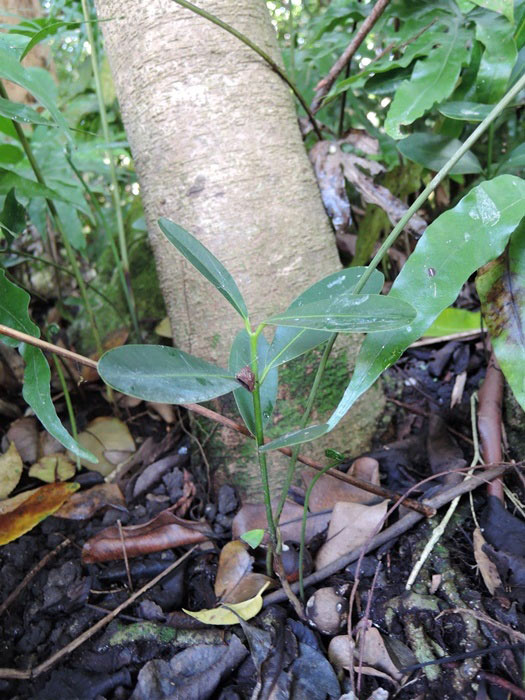Calophyllum inophyllum
The distribution range of the Alexandrian laurel extends from the tropical coastal regions of eastern Africa and Madagascar, through countries along the Indian Ocean coast (such as India and Sri Lanka), Southeast Asia (such as Malaysia, the Philippines, Indonesia, Thailand, and Vietnam), to Hainan Island in China, the Ryukyu Islands, and the Ogasawara Islands in Japan. It is also found in the tropical regions of Australia and the vast Pacific Islands (such as Polynesia and Melanesia), making it a representative tree species of the tropical coastal forests spanning the Indian Ocean and the western Pacific. In Taiwan, wild populations are only found along the coastlines of the Hengchun Peninsula and Orchid Island. Despite its limited distribution in Taiwan, it is widely cultivated in parks, green spaces, and as street trees throughout the island due to its elegant form, lush green foliage, and fragrant flowers, with some regions even featuring century-old trees.
The dense canopy of the Alexandrian laurel provides excellent shade. Its oval-shaped leaves are leathery and glossy, remaining evergreen throughout the year, making it highly ornamental. Its flowering season runs from spring to summer, with small white flowers emitting a delicate fragrance that attracts bees and butterflies for pollination. The round, adorable seeds can serve as natural toys for children and are often crafted by hobbyists into unique ornaments or stylish seed potted plants.
In addition to its aesthetic value, the Alexandrian laurel also has ecological and economic significance. Its salt tolerance, drought resistance, and wind resistance make it an excellent tree species for coastal windbreaks. Its seeds are rich in oil and have been found to have UV-blocking properties, offering potential for future development as a natural sunscreen product. Additionally, its wood is hard and water-resistant, making it an excellent material for shipbuilding and furniture.

